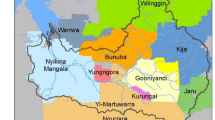Abstract
The paper discusses the role of visions within sustainability assessment and governance for sustainable development in Europe. Currently, our societies (still) develop along an unsustainable path, which results in a number of persistent problems (climate change, loss of biodiversity, poverty, etc.). Integrated sustainability assessment (ISA) is one approach designed to initiate transitions towards sustainability. Visions of a sustainable future form an important part of ISA. These visions support the process of discussing how the transition from today’s societies/systems to a sustainable future can be achieved. According to the principles of ISA, visions should be developed in a participatory way, thus including the ideas and perceptions of stakeholders, decision-makers, experts and/or citizens. The paper starts with an introduction of the concepts of visions and scenarios and describes exemplary methods for their participatory development. Then, the main concepts for integrated sustainability assessment in comparison with other impact assessments are discussed. The main body of the paper presents experiences in three projects (ARTEMIS, ALARM, ECOCHANGE) in which visions and scenarios of sustainable futures were developed with stakeholders. The paper concludes with lessons learned and suggestions for future applications for participatory scenario development.

Similar content being viewed by others
Notes
Due to the very high level of renewables this rest only accounts for about 20% in the scenarios.
Three so-called “shock scenarios” were also developed.
Not each project serves as an example to support the answers given to the questions, but depending on the scope of the projects, some questions only build on our experiences from one project. As the EcoChange project is still under elaboration, it can only provide limited evidence so far.
References
Clark WC et al (2001) Acid rain, ozone depletion, and climate change: an historical overview. In: The Social Learning Group, learning to manage global environmental risks. MIT Press, Cambridge, pp 22–55
Bohunovsky L, Madlener R, Omann I, Bruckner M, Stagl S (2007) Lokale Energiesysteme der Zukunft. Integrierte Nachhaltigkeitsbewertung von lokalen Energieszenarien. Ökologisch Wirtschaften 2(2007):47–50
Brand K-W (2000) Nachhaltigkeitsforschung—Besonderheiten, Probleme und Erfordernisse eines neues Forschungstypus. In: Brand K-W (ed) Nachhaltige Entwicklung und Transdisziplinarität. Analytica, Berlin, pp 6–25
IPCC (2000) Emission scenarios. Cambridge University Press, Cambridge
Jäger J, Rothman D, Anastasi C, Kartha S, van Notten P (2008) Training Module 6. Scenario development and analysis. GEO Resource Book. A training manual on integrated environmental assessment and reporting. Available at: http://www.unep.org/ieacp/iea/training/manual/module6.aspx
Kemp R, Loorbach D, Rotmans JR (2007) Transition management as a model to manage processes of co-evolution towards sustainable development. Int J Sustain Dev World Ecol 14:1–15
Kowalski K, Stagl S, Madlener R, Omann I (2008) Sustainable energy futures: methodological challenges in combining scenarios and participatory multi-criteria analysis. Eur J Oper Res 197(3):1063–1074
Madlener R, Kowalski K, Stagl S (2007) New ways for the integrated appraisal of national energy scenarios: the case of renewable energy use in Austria. Energ Pol 35(12):6060–6074
Nakicenovic N, Swart R (eds) (2000) Emissions Scenarios. 2000 (pp 570). Special Report of the Intergovernmental Panel on Climate Change. Cambridge University Press, Cambridge
Settele J, Hammen VC, Hulme PE, Karlson U, Klotz S, Kotarac M, Kunin WE, Marion G, O’Connor M, Petanidou T, Peterson K, Potts SG, Pritchard H, Pysek P, Rounsevell M, Spangenberg J, Steffan-Dewenter I, Sykes MT, Vighi M, Zobel M, Kuhn I (2005) ALARM: assessing large scale environmental risks for biodiversity with tested methods. GAIA 14(1):69–72
Shell International (2003) Scenarios: explorers’ guide. http://www.shell.com/scenarios
Spangenberg JH (2007) Integrated scenarios for assessing biodiversity risks. Sustain Dev 15(6):343–356
Stocker A, Jaeger J, Meyer B, Omann I (2007) The socio-economic modelling for the ALARM project: process and results. SERI Working Paper 6. Available at: http://seri.at/energy-and-climate/2009/08/19/the-socio-economic-modelling-for-the-alarm-project-process-and-results/
Tàbara JD, Pahl-Wostl C (2007) Sustainability learning in the management of social-ecological systems. MATISSE Working Paper 11. Available at: http://www.matisse-project.net
Tàbara JD, Elmqvist B, Ilhan A, Madrid C, Olson L, Schilperoord M, Valkering P, Wallman P, Weaver P (2007) Participatory Modelling for the integrated sustainability assessment of water: the World Cellular Model and the MATISSE Project. MATISSE Working Paper 9. Available at: http://www.matisse-project.net
Tuinstra W, Jäger J, Weaver PM (2008) Learning and evaluation in integrated sustainability assessment. Int J Innov Sustain Dev 3/1. Special Issue: Integrated Sustainability Assessment: Concept, Process and Tools
van de Kerkhof MF, Tuinstra W, Spanjersberg M, Hisschemöller M, Mol APJ (2002) Conclusions and lessons for participatory integrated assessment. In: Hisschemöller M, Mol APJ (eds) Evaluating the COOL dialogues. Climate options for the long term. Final report. (NRP, 410200119. Programme Office NRP, Bilthoven, pp 93–102
Weaver PM, Rotmans J (2006) Integrated sustainability assessment: what is it, why do it, and how? Int J Innov Sustain Dev 1(4):284–303
Whitmarsh L, Swartling Å, Jäger J (2009) Participation of experts and non-experts in a sustainability assessment of mobility. Environ Policy Gov 19:232–250
Acknowledgments
This paper builds on the experiences from four projects—we are grateful for the funding that made our work possible: The ARTEMIS project was funded by the Austrian Science Fund (FWF, http://www.fwf.ac.at; Project Number P16734-G04); ALARM, MATISSE and ECOCHANGE were/are funded by the European Commission (DG Research; project numbers: GOCE-CT-2003-506675 ALARM, 004059 (GOCE)—MATISSE; FP6-036866 ECOCHANGE). Many thanks also to the anonymous referees of the first version of this paper for their valuable and constructive feedback.
Author information
Authors and Affiliations
Corresponding author
Rights and permissions
About this article
Cite this article
Bohunovsky, L., Jäger, J. & Omann, I. Participatory scenario development for integrated sustainability assessment. Reg Environ Change 11, 271–284 (2011). https://doi.org/10.1007/s10113-010-0143-3
Received:
Accepted:
Published:
Issue Date:
DOI: https://doi.org/10.1007/s10113-010-0143-3




